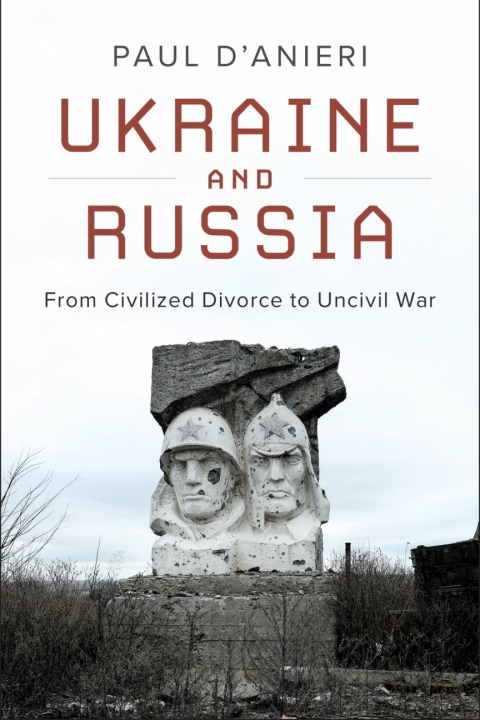Description
Efnisyfirlit
- Half-title
- Title page
- Copyright information
- Dedication
- Contents
- List of Maps
- List of Tables
- Acknowledgments
- Additional material
- 1 The Sources of Conflict over Ukraine
- Competing Visions and Interests after the Cold War
- Debating the Causes of the War
- Locating the Sources of International Conflict
- The Approach: Historical and Analytical
- Analytical Themes
- Competing Goals and Incompatible Perceptions of the Status Quo
- The Security Dilemma
- Democracy and Power Politics
- Domestic Constraints and State Strength
- Proximate Causes
- Overview of the Book
- Summary
- 2 New World Order? 1989‒1993
- Introduction
- The Road to Ukrainian Independence
- Creating a State
- Belavezha: The Civilized Divorce
- The Commonwealth of Independent States (CIS)
- Problems of Economic Coordination and the Collapse of the Ruble Zone
- The Black Sea Fleet, Sevastopol, and Crimea
- The Emergence of Energy Politics
- Poland: The Dog that Didn’t Bark
- Ukraine’s Domestic Political Instability
- Western Aid: A Missed Opportunity?
- Nuclear Weapons and the Security Dilemma
- Russia, the ”Near Abroad,” and Ukraine
- Clinton, Yeltsin, and Russian Democracy
- The Prehistory of NATO Expansion
- Conclusion
- 3 Hope and Hardship, 1994‒1999
- Russia Debates Its Role
- Ukraine’s 1994 Elections
- Kuchma’s ”Multivector” Foreign Policy
- Trade and the Commonwealth of Independent States
- Crimea
- The Black Sea Fleet and the 1997 Friendship Treaty
- Bosnia Drives a Wedge
- Kuchma and the United States
- Ukraine and NATO
- Ukraine and the European Union
- Kosovo Deepens Russia’s Conflict with the West
- Conclusion
- 4 Autocracy and Revolution, 1999‒2004
- Kuchma’s Consolidation and the Foreign Policy Effects
- Deteriorating Ties with the West
- Kuchma’s Turn toward Russia
- The EU, Ukraine, and Russia
- The Evolution of Energy Politics
- The West, Russia, and Ukraine
- The Orange Revolution: Prelude
- The Orange Revolution: Crisis and Aftermath
- Consequences of the Orange Revolution
- Conclusion
- 5 Reform and Reversal, 2004‒2010
- The Collapse of the Orange Coalition and the Resurrection of Viktor Yanukovych
- Foreign Policy under Yushchenko
- Russia Responds to the Orange Revolution
- Ukraine and the EU
- Energy Politics
- The West, Russia, and Ukraine
- The Bucharest Summit
- Russia Invades Georgia
- Reset and Overload
- The Road to Ukraine’s 2010 Presidential Election
- Conclusion
- 6 Viktor Yanukovych and the Path to Confrontation, 2010‒2013
- Yanukovych Consolidates Power
- 2012 Parliamentary Elections
- A New Pivot to Russia
- The 2012 Language Law
- Russia, the United States, and Europe
- Integration: The European Union and Russia Compete for Ukraine
- Yanukovych, Autocracy, and Revolution
- Conclusion
- 7 From Revolution to War, 2013‒2015
- The Emergence of Protest: NovemberDecember 2013
- Yanukovych Looks to Russia
- Reaction in Russia and the West
- Russia Seizes Crimea
- The West Responds on Crimea
- NATO’s Response
- Intervention in Eastern Ukraine
- Russia’s Diplomatic Offensive
- Attempts at Conflict Resolution
- Ukraine Holds Elections
- The Conflict Grows
- The West’s Response to the War in Eastern Ukraine
- MH17: The Conflict Changes Course
- From Geneva to Normandy to Minsk
- The Battle for Debaltseve and Minsk-2
- Conclusion
- 8 Conclusion: Ukraine, Russia, and the West ‒ from Cold War to Cold War
- Disagreements from the Start
- Events That Drove Wedges
- Events and Explanations
- Was War Inevitable?
- Russia’s Motives
- Prospects for Peace
- Potential Ends to the Conflict
- Compromise?
- The New Conflict in Europe
- A Final Word
- Index






Reviews
There are no reviews yet.